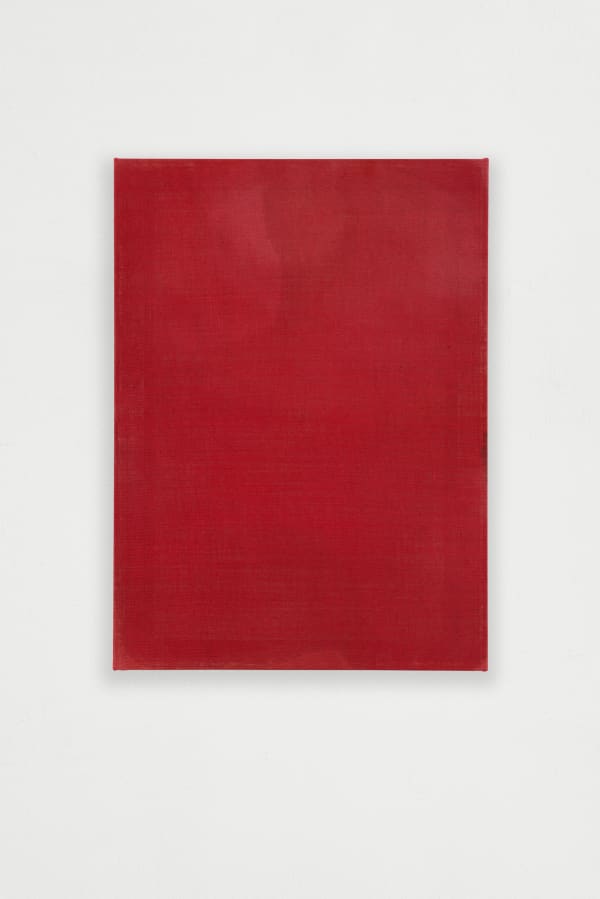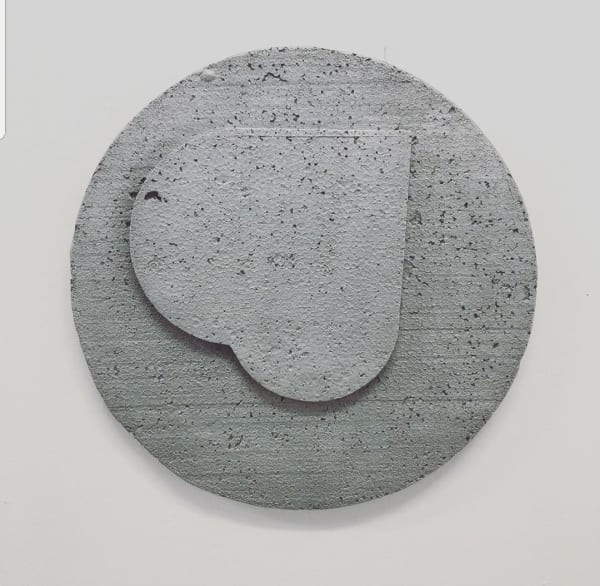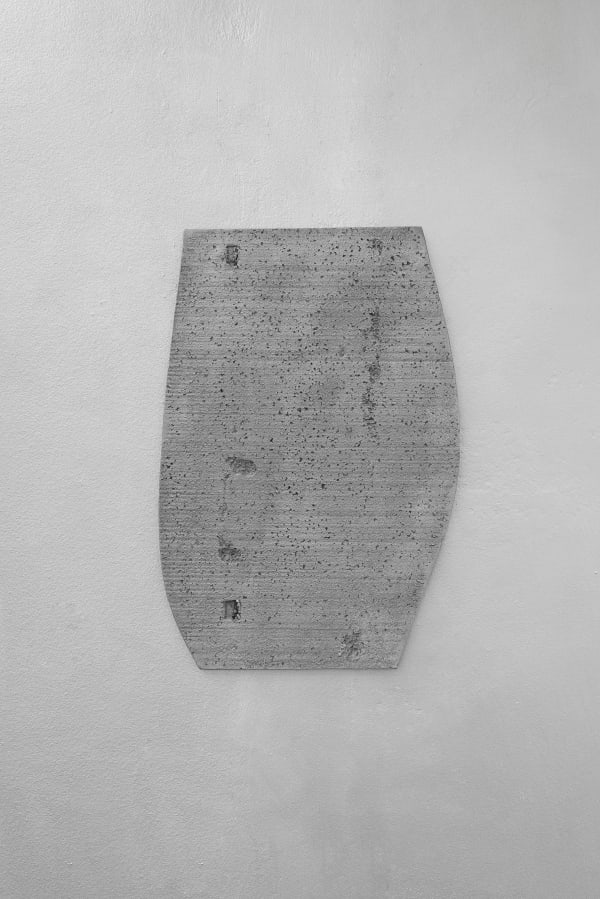thomas kratz: lick gin
Past exhibition
Overview
KETELEER GALLERY is very pleased to introduce Lick Gin, the first solo exhibition by German painter Thomas Kratz (°1972. Waiblingen, Germany).
Press release
Paint is the painter’s first obstacle and his condition of possibility. Thomas Kratz is therefore as cautious as he is playful, aware and inquisitive. Never intervening too much, always witnessing. His is a dialectical approach, turning his practice into a seesaw of restrained deliberate gestures and coincidental effects.
Man manipulates material, be it by working on land, turning thoughts into language, expressing the indescribable with paint,… it’s the fundamental human capacity to creatively actualize his sense of self. But paint also has its own, innate qualities: it can be rich, permeating, absorbing, occlusive, revealing, voluminous, dynamic,… independent of the painter. It transforms as it dries, reflects the light, cracks up, or spreads out in patterns. Kratz doesn’t seek to impose himself onto the material. Leaning into the unknown, he lets paint have its say, before responding. A hierarchy-free communication; an at once humble, courageous and rewarding endeavour.
Paint is also, and always, the interlocutor of colour. From multicolour jumbles to monochrome panes, Kratz experiments with translucence versus opaqueness, boundaries versus blurred edges, dominance versus free movement, resonating details versus absence… taking us on a surprisingly seductive ride, reopening our senses and reactivating our abstract aesthetic vision. But colours can tell lies. Informing our visual receptors with all sorts of cues, colours invade our perceptions in a very specific manner, enabling palpable bodily experiences, persuading us to feel a certain but elusive way, distorting reality.
French philosopher Maurice Merleau-Ponty was one of the first to highlight the significance of the body to human’s experience, interaction and understanding of the world, parting with the – now considered misleading – mind-body division. In today’s times, our insatiable hunger for technological development is confronting us with this critical reflection more and more. The more virtual (or artificially authentic) we try to become, the more we stumble upon the body as an inescapable mode of being. The human body is a recurrent theme throughout Kratz’s oeuvre. Paint often symbolically or literally refers to the human skin. In his Nudes series, Kratz uses paint colours that were named after skin tones by the paint manufacturers. Since the Black Lives Matters movement, they – following the long overdue global awareness – were confronted with these names’ implicit colour bias, and changed them to neutral alternatives. In doing so, however, they allowed colour to banalize very complex contemporary social settings. Skin holds us (somewhat) together, containing and protecting what’s underneath. But it’s also a literal open edge, an ultrathin but highly responsive membrane communicating with the outside world. By painting skin colours onto the back and front of glass panels, Kratz explicitly multiplies this edge, adding visibility to the depth, emphasising the multitude of connotations and implications associated with skin. The backs of the works are untouchable but the fronts are extremely vulnerable, they’re both transparent and concealing, containers of ambiguities.
In the Head series, ink and acrylics are introduced to hessian, allowing the subsequent effects to dictate the image. Kratz waits for the first thinly applied layer to transform through drying before adding a second, a back-and-forth of discovering and reacting. In keeping with his exploratory intentions, everything is left transparent – the paint, the artist’s own gesture, the supporting material and the stretcher bars underneath. This is a premeditated kind of exposure, another kind of nude, with a semi-accidental outcome – showing off the parts that make up the whole.
The Align Hug series are solidified exposures of the steps that lead up to a finished whole: the temporary stages of construction. They’re pronounced suggestions of shapes, ‘heavy sketches’ for designing a space, architectural memes, in a sense. They start off as Styrofoam models, which are pushed into sand and then poured over by hot aluminium, burning away the original, making it impossible to create a second version. A technique that’s aptly named ‘lost form’ in German. Kratz sees these reliefs as works on paper, sketches that were made quickly with scissors, knife and glue but transformed into a strong material so they will last forever, turning the preliminary into the permanent.
A gallery, or any space that’s used to exhibit art works always becomes part of the exhibition. We tend to try and ignore this and ‘focus on the works’, but Kratz illuminates just this. The environment will always influence the works, and the work changes the whole ‘feel’ of the space. Kratz lets his colours spill over onto the walls, exaggerating what’s very true: how art reaches outwards, is never contained within its perimeters.
Lauren Wiggers, 2020.
Installation Views
Works
-
 Thomas Kratz, am A (N) (Head), 2020
Thomas Kratz, am A (N) (Head), 2020 -
 Thomas Kratz, am B (N) (Head), 2020
Thomas Kratz, am B (N) (Head), 2020 -
 Thomas Kratz, am C (N) (Head), 2020
Thomas Kratz, am C (N) (Head), 2020 -
 Thomas Kratz, am D (N) (Head), 2020
Thomas Kratz, am D (N) (Head), 2020
-
 Thomas Kratz, am E (N) (Head), 2020
Thomas Kratz, am E (N) (Head), 2020 -
 Thomas Kratz, am F (N) (Head), 2020
Thomas Kratz, am F (N) (Head), 2020 -
 Thomas Kratz, An Art Fair for the Art World Community, 2020
Thomas Kratz, An Art Fair for the Art World Community, 2020 -
 Thomas Kratz, AR°5 Align Hug a Net Girl, 2015
Thomas Kratz, AR°5 Align Hug a Net Girl, 2015





















